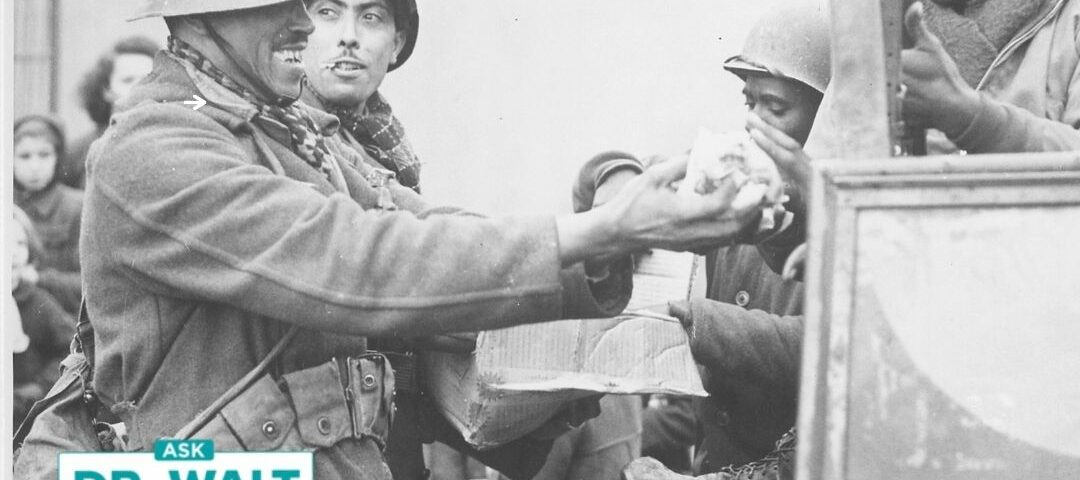
New law outlaws crib bumpers or inclined sleepers for infants
May 26, 2022
Steps to help prevent tick or mosquito bites
May 31, 2022Here’s an Op-Ed that I submitted to a number of newspapers to run this Memorial Day weekend. I’m hopeful one or more will actually publish it. But, if not, I hope it will be a Memorial Day blessing that you can share with family and friends when you’re celebrating this Memorial Day weekend. Reading it to them during your celebration will resurrect and recognize the amazing sacrifices, suffering, and successes of these incredible soldiers.
D-Day.
Ask the average person what that means, and they’ll mention something about Normandy. But did you know the men on the Southern Front of the European Theater of Operations (ETO) had five D-Days? All were amphibious landings on the shores of French Morocco; Sicily; Salerno, Italy; Anzio, Italy; and Southern France.
When I ask people to name the first European capital liberated by the Allies, the most common answer is, “Paris.” That occurred in August 1944, almost 12 weeks after the Southern soldiers liberated Rome on June 4-5, 1944. Unfortunately, news about Rome’s emancipation was buried by the Normandy invasion on June 6. Newsrooms rushed to replace front-page stories recounting the battles to free Rome with even larger headlines about Normandy. From that moment on, the Southern Front became, in essence, the “Forgotten Front.”
Another case in point: many have heard of the Northern Army’s horrific Battle of Hürtgen Forest throughout the fall and winter of 1944, but few remember the arguably more gruesome and arduous battles fought in the Vosges Mountains at the same time. In three months of ferocious fighting in severe conditions, the Southern Front G.I.s accomplished what no army in the history of warfare had ever done before—conquer an enemy defending the Vosges Mountains—and in winter no less!
Most know about the Northern Front’s monumental Battle of the Bulge, but almost no one remembers the fierce and potentially more disastrous Battle of the Colmar Pocket and its decisive Battle at La Maison Rouge—waged in some of the worst winter wartime conditions ever recorded. Historian Stephen Ambrose wrote, “It was fought in conditions so terrible that they can only be marveled at, not really imagined.” He added, “Only those who were there can know. More than once in interviewing veterans of the January fighting, when I ask them to describe the cold, men involuntarily shivered.”
The Northern Front doughboys fought 336 days (June 6 to May 8) while on the Southern Front the 3rd Infantry Division slogged a long, bloody 913 consecutive days (531 combat days) to reach V-E Day in Salzburg, Austria, and was the only American Division that fought the Nazis on fronts in North Africa (Morocco, Algeria, Tunisia) and Europe (Sicily, Italy, France, Germany, Austria). The 3rd had more casualties than any other division during the entire war—nearly 35,000, more than twice the original strength of the division. They hold the record for high combat citations, with no fewer than 29 Medals of Honor. When German Field Marshal Albert Kesselring was asked, “What was the best American division faced by troops under your command?”, without hesitation, he placed the 3rd at the top.
Lieutenant General Lucian K. Truscott, Jr., who commanded the Southern Front, said, “Officers and men under my command established records that were not equaled by others in this war and have not been excelled in any other to my knowledge. In large measure, these magnificent accomplishments … passed without full recognition”—and have been forgotten for almost eighty years.
The front-line men and their brothers-in-combat faced and conquered fear, heartbreak, dread, chaos, stench, casualties, wounds, and unimaginable opposition. Many times, they faced battles they feared would end in inevitable defeat or certain death. They sacrificed the daily comforts most consider essential. Those that returned to the home front savored each new day, each breath, in a new way. They knew their many friends in battle who had left their all on the altar of war—who had sacrificed their tomorrows—had allowed them and us to live—truly live—for all their and our todays.
All our military men and women deserve to be remembered and honored on Memorial Day—especially those who gave the ultimate sacrifice. But it’s long overdue to have a special shout-out for those who suffered and sacrificed on the Southern Front. Almost all are gone now—have graduated to eternal glory—but as General Truscott said, “We cannot look back to them if we do not look forward to the future for which they fought—and died.” So, as we celebrate our continued liberty and freedom on this Memorial Day, my hope and prayer are that the heroes who fought and died on the Southern Front will be forgotten no longer.
Walt Larimore, a Colorado-based physician, and best-selling author spent significant parts of the last 16 years studying the “Forgotten Front” of Northern African and Southern Europe in World War II while researching his book, At First Light: A True World War II Story of a Hero, His Bravery, and an Amazing Horse. The book was released by Knox Press in April.

© Copyright WLL, INC. 2022. This blog provides healthcare tips and advice that you can trust about a wide variety of general health information only and is not intended to be a substitute for professional medical advice, diagnosis, or treatment from your regular physician. If you are concerned about your health, take what you learn from this blog and meet with your personal doctor to discuss your concerns.



